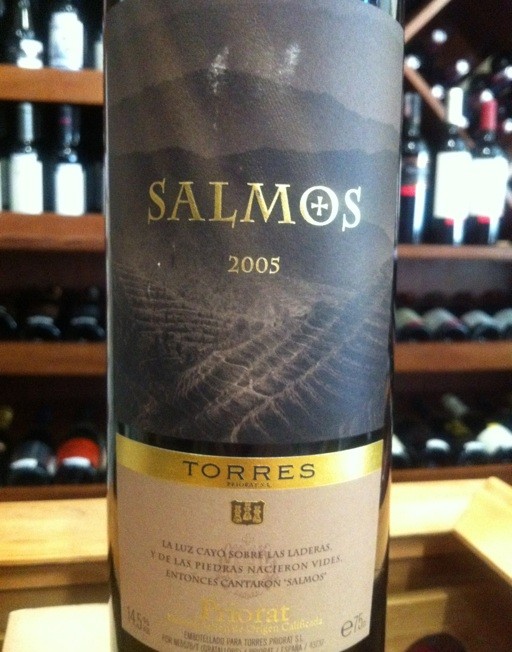If you had nothing to do one night, and took a brief excursion in your WABAC machine to 2007 you’d find a column of mine reviewing Rioja. In it, I awarded Gaudium, a $70 Rioja from Marques de Caceres a grand total of two stars. The problem was the wine was very, very oaky, and very, very tannic.
The thing was, I kind of enjoyed the wine. But there was no way I could let this wine loose on an unsuspecting public; hence the unprecedented ranking.
Since then Rioja and all of Spain have come an enormous distance. This is not to say the Spanish are turning out only New World style wines, but rather they have allowed modern science and winemaking to have their way with the stuff.
These days, I have no problem pointing people to expensive Spanish wines. In fact for several years, I have thought Spanish wine over $20 to be among the best deals on the planet. They are approachable, fruity, and with a variety of flavours available to suit every palate.
If your budget can run higher, this is a category your really need to explore. The wines over $30 are often unbelievable values and offer the entire gamut of flavour sets from the old fashioned to the delicate to the fat, viscous wines in favour on this side of the Atlantic.
Let’s start with a wine from the aforementioned Marques de Caceres. This wine is available pretty much everywhere in Canada, including the MLCC, SLGA and I’d guess every wine store in Alberta. In very general terms this has been a winery slow to change. This makes sense when you consider the enormous global clientele they have: Rapid change to a palate means customers moving on. I bought their Gran Reserva with a certain amount of trepidation (I am less fond of oak flavours than other people). I was pleasantly surprised.
The bouquet is dark, meaty and full of life, with a shy herbaceous scent in the background. The palate is balanced, beautifully structured, and tremendously dry. Yes the tannins are still forthright, but the oak flavours are well into the background where they belong. If you drink this with, say, a slice of smoked cheddar, it becomes downright sweet, and full of fruit.
In short this is a wine for old farts like me, who never see a cow without thinking “steak!” and who assume vegans are from a different galaxy who want decent tannin, a slightly thinner, brighter palate and a structure like the bones of a fashion model – showing but elegant. I loved it.
If you are a fat wine drinker then you need to have a glass of Altos de Luzon. This is an unabashedly New World style, and probably aimed at cork dorks. It is made primarily from monastrell, a wine usually used as filler to provide structure and production in the vineyard.
Luzon has blended Cabernet Sauvignon and Tempranillo to add refinement to the muscular Monastrell. The result is a tremendous wine, much bigger than the price tag would indicate. It will suit serious red drinkers to the end of the evening. If you’re looking for a beef eater’s wine look no further.
Salmos is a wine similar in concept to Altos: the vineyards are high, which means a cool night allowing the grapes to build acidity. It is a blend of wines aged in French barrels and the result is a rich, thick wine with that meaty bouquet I associate with Spanish wines. Spain is barbecue beef country and their wines seem perfect for such fare.
It has enough texture to charm the New World crowd and enough acidity and elegance to keep people like me thinking ‘Wow!’ The finish should keep everyone happy, thinking good wine thoughts long after the bottle is empty.
Torres Gran Coronas Cabernet Sauvignon is a wine from a completely different region, Penedes down on the Mediterranean, near Barcelona. If you’re a cab drinker and tend to buy American or Australian, you need to take this baby for a test drive on the dining room table.
A tremendous bouquet of herbs and fruit draws you into a medium weight crimson wine with solid but drinkable tannins. It’s smooth, elegant with a tremendous palate of fruit and berries that is surprisingly well integrated for such a young wine. This is where old world elegance meets new world style. For my money they’ve hit the sweet spot perfectly.
It really doesn’t matter which of these wines you choose or why. They are all wonderful and deserving of your time and money. The real moral of the story is go to the Spanish section and start drinking (Hint: modern etiquette demands paying for the bottle and not opening it until in the parking lot).
Marques de Caceres Grand Reserva Rioja, Spain, 2004. $35.41 *****
Torres Salmos, Priorat, Spain. 2009. $32.99 *****
Altos de Luzon, Jumilla, Spain, 2007. $26.90 *****
Torres Gran Coronas Cabernet Sauvignon, Penedes, Spain, 2008. $22.98 *****
___
James Romanow writes about Wine and all things Boozy for the Spectator Tribune. Follow him @drbooze
Follow us: @SpectatorTrib
